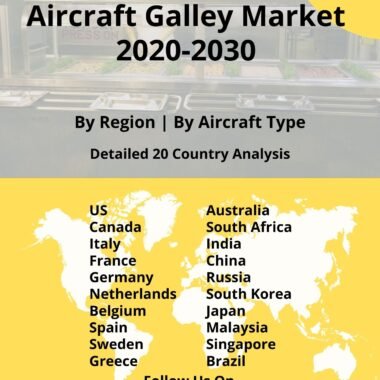Description
Frequently Asked Questions of PMU Market
PMU stands for Power Management Unit, it is an advanced digital engine control unit. The technology is predominantly used to set the engine power in response to the setting of the pilot’s power control lever. Other external parameters including the ambient pressure and temperature are also considered by the unit while making the power adjustments. A growth in technical development within the power control systems market, and the use of enhanced technologies like IoT, AI, ML, etc within the electronics market are poised to drive innovation within this field. The inclusion of a PMU makes it impossible for a trainee pilot to over-torque the engine. The PMU identifies the factors which could potentially cause flameout and it automatically boosts the ignition in cases where the speed of the system has dropped suddenly. The propeller interface unit (PIU) responds to the speed control signals delivered by the PMU.
Depending on the type of system being powered, it is noted that there are two key types of PMU to be noted, i.e. Type I and Type II. Type I is predominantly designed to function across various speeds. For instance, within the commercial aviation market a Type I PMU would be used in a traditional fixed-wing aircraft. Additionally, it is noted that Type II is a Hybrid/APU unit, and it is utilized when the engine is used solely to generate electricity and when the engine runs at a constant speed. Additionally, research states that hybrid systems are mainly used in applications that make use of electric motors for propulsion. The flight time is extended via the generator system by using fuel to increase stored energy for a given weight. APU systems-based electrical generators are noted to be used in vehicles or as ground support. Sizes range from very small to very large. Features including secondary outputs, backup battery management, external power connections, and output signals are included across both Types I as well as Type II PMUs.
Major factors driving the growth of the PMU market
The growing commercial aviation market is poised to be one of the key factors that propel the growth associated with the commercial aircraft PMU market. According to secondary research, the number of the active global commercial fleet currently stands at 25,900 aircraft as of 2019. It is forecasted that in the coming 20 years, the market will witness an 82% increase in jets through 2041, and the global commercial fleet will attain a value of 47,080. The growing passenger demand and the increased affordability of air travel amidst the middle-class population are some of the factors that instate the demand for an increased number of commercial aircraft. Additionally, modeling as well as remodeling old models is another key driver which is anticipated to drive the growth associated with this market.
Trends influencing the growth of the market
The market for commercial aviation was noted to have been one of the substantially impacted verticals due to the advent of the pandemic. The passenger demand dropped and the imposed flight restrictions curtailed air travel even further. Additionally, the prices for jet fuel fluctuate with a change in the global geo-political scenario. Brewing war-like situation between Russia and Ukraine and the involvement of other global markets like the US are poised to affect the prices further.
Market Dynamics
In terms of technology-based trends, it is noted that the growth in adoption of IoT-based technologies and the expanding segment of research within the electronics domain is poised to drive the growth associated with the commercial aircraft PMU market. The increased application of technology to increase the comfort of travel amongst the passengers is another factor that is poised to support the growth of this market.
Developments
The increased replacement of the old aircraft fleet is also a factor that is anticipated to drive the aircraft commercial PMU market. The aftermarket sales of this product are hereby poised to increase due to the growth in the remodeling of older aircraft models. Recycling aircraft electronics, as well as parts, is another factor that is poised to drive growth. The use of aircraft PMU allows easy monitoring of fuel consumption, the aircraft components as well as the ambient conditions around an aircraft. It serves as a one-stop solution that can alter the power supplied to the engine based on the present motion of the aircraft.
HondaJet Echelon was unveiled as the official name of Honda Aircraft’s new light jet at the 2023 National Business Aviation Convention and Exhibition (NBAA-BACE). The name represents the company’s forward-thinking approach to the next-generation business jet, elevating efficiency to new heights while also providing comfort and convenience. The plane will be the world’s first single-pilot light jet capable of nonstop transcontinental flight across the United States. This offering aims to reduce operating costs while also providing an owner experience that was previously unattainable. Furthermore, the HondaJet Echelon’s design incorporates electrification and automation of its systems, resulting in enhanced pilot capabilities, reduced workload, and increased safety. The HondaJet Echelon’s design concept revolves around increasing travel efficiency in all aspects to fulfill missions and provide an experience typically reserved for larger aircraft. Through aerodynamic innovations, the aircraft is expected to outperform conventional light jets on typical missions by up to 20% and mid-sized jets by more than 40%. The HondaJet Echelon, previously introduced as the HondaJet 2600 Concept in 2021, establishes a new paradigm in the light jet category by providing a mid-sized jet experience. The HondaJet Echelon, as a premium addition to the HondaJet family, will also have a holistic focus on the cabin experience, including space, comfort, and productivity.






